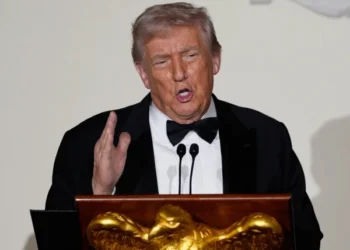Washington: Russian President Vladimir Putin has agreed to temporarily halt attacks on Ukrainian energy facilities, marking a potential step towards de-escalation in the ongoing conflict. However, he has refused to endorse a full 30-day ceasefire proposed as part of broader peace negotiations.
Trump’s Proposal for Peace Talks
The proposal to halt attacks on energy infrastructure was put forward by former U.S. President Donald Trump, who sees it as a preliminary measure that could lead to a permanent peace deal between Russia and Ukraine. Trump, who has been vocal about his intentions to mediate an end to the war if re-elected, believes that ensuring the safety of Ukraine’s energy infrastructure is crucial to stabilizing the war-torn country.
Ukraine’s Response to the Agreement
The Ukrainian government has expressed cautious support for the deal, recognizing the temporary halt of attacks on power plants, oil depots, and electrical grids as a necessary measure to prevent further humanitarian crises. Millions of Ukrainians have faced power outages and disruptions due to previous Russian strikes, which have severely impacted essential services and civilian life.
Despite its support for the temporary pause, Kyiv has maintained its stance that any long-term peace agreement must include the full withdrawal of Russian troops from occupied territories. Ukrainian President Volodymyr Zelenskyy has reiterated that while stopping attacks on critical infrastructure is a positive development, it does not equate to genuine peace.
Putin’s Strategic Position
Military analysts suggest that Putin’s decision to refrain from attacking Ukraine’s energy grid is a calculated move rather than a concession. With Russian forces advancing in eastern Ukraine, the Kremlin sees little strategic advantage in agreeing to a broader ceasefire. Some experts argue that the pause in attacks on energy facilities may be an attempt to reduce Western pressure while allowing Russia to consolidate its military gains.
The Russian government has also expressed skepticism about Ukraine’s commitment to the temporary ceasefire. The Kremlin, in an official statement, voiced concerns that Ukraine could use the pause to redeploy and strengthen its military forces, potentially altering the battlefield dynamics once the ceasefire expires.
U.S. and Western Reactions
The White House has stated that discussions on a broader peace plan will commence immediately following a long telephone conversation between Trump and Putin. However, it remains unclear whether Ukraine will participate in these negotiations. The Biden administration has emphasized that any diplomatic efforts must involve Ukraine as an equal party and that Washington will continue to provide military and economic support to Kyiv.
NATO allies have responded with mixed reactions to the development. While European leaders generally support any measure that reduces civilian suffering, they remain wary of Putin’s long-term intentions. Some NATO officials fear that the temporary halt on energy attacks may be a tactical move to buy time rather than a genuine step toward peace.
Ceasefire Talks and Potential Outcomes
The planned peace talks will reportedly take place in the Middle East, with a focus on a naval ceasefire in the Black Sea. This agreement aims to secure shipping lanes and ensure the safe passage of commercial and humanitarian vessels, which have been threatened by ongoing hostilities.
A broader ceasefire and a potential roadmap to a permanent peace agreement will also be key discussion points. However, without Putin’s full commitment to halting military operations or withdrawing troops from occupied Ukrainian regions, many experts remain skeptical about the feasibility of a lasting peace deal.
Challenges and Future Prospects
For a long-term peace agreement to be effective, several key issues need to be addressed:
- Withdrawal of Russian Forces: Ukraine insists that peace talks must include discussions on Russian troop withdrawals, a demand Moscow has so far ignored.
- Security Guarantees: Kyiv seeks security assurances from NATO and Western allies to prevent future aggression from Russia.
- Economic Reconstruction: Ukraine’s economy has suffered immense damage due to the war, and any peace deal must include provisions for rebuilding its infrastructure.
- Territorial Disputes: The fate of Russian-occupied territories remains a contentious issue that could hinder diplomatic progress.
Conclusion
While Putin’s agreement to halt attacks on Ukrainian energy facilities represents a minor step toward reducing immediate civilian suffering, his refusal to endorse a full ceasefire underscores the complexities of the ongoing conflict. As diplomatic discussions unfold, the international community remains watchful, knowing that true peace can only be achieved through comprehensive negotiations that address both security and sovereignty concerns.
The coming weeks will be crucial in determining whether this temporary agreement can evolve into meaningful peace efforts or if it will merely serve as a brief pause in a prolonged and devastating war.

























